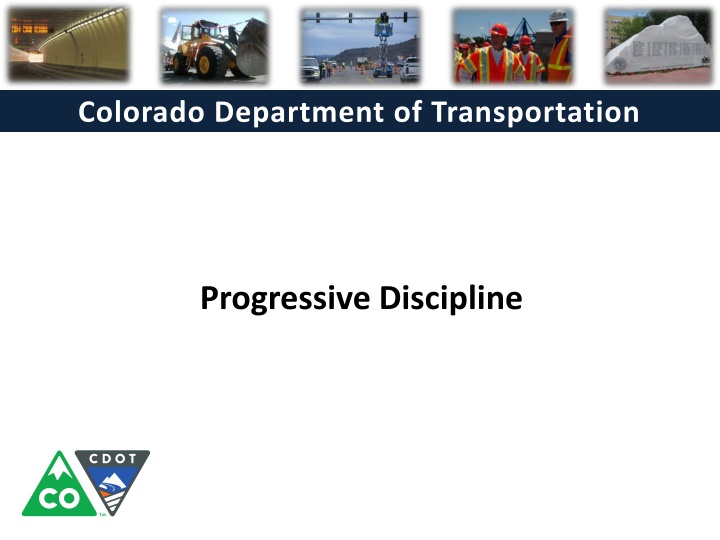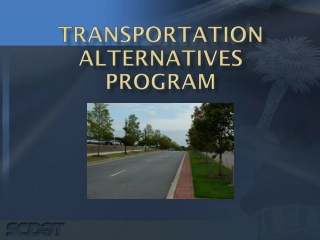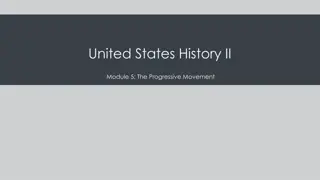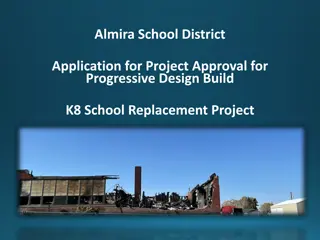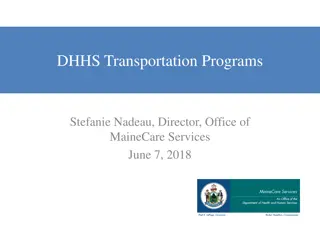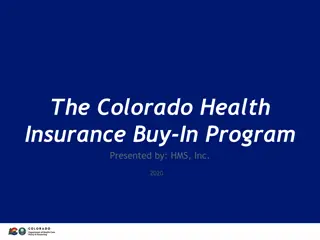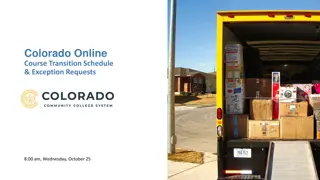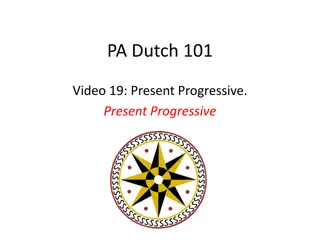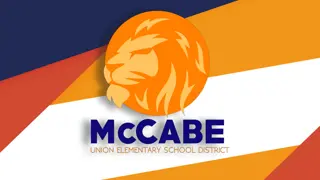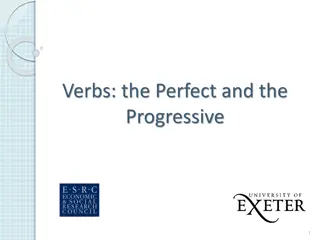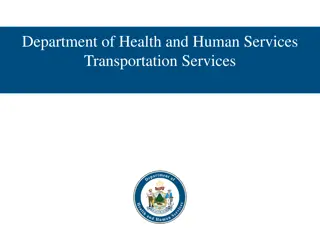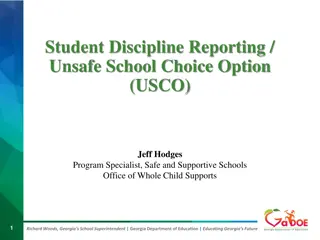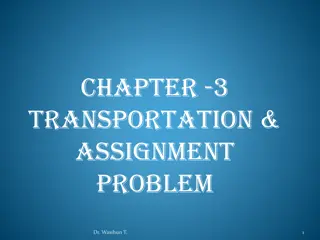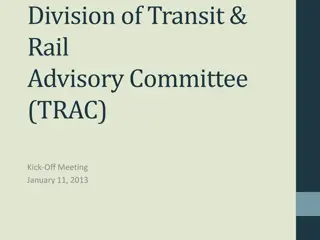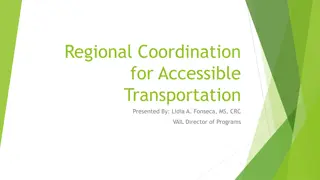Colorado Department of Transportation Progressive Discipline Course Overview
This course offered by the Colorado Department of Transportation focuses on Progressive Discipline, covering topics such as the process of progressive discipline, resolving performance issues, connecting performance management with discipline, and resources available for supervisors/managers. Participants engage in classroom discussions, exercises, and are encouraged to contribute positively to the learning environment. The course agenda includes sections on Introduction to Progressive Discipline, Coaching Employees, Corrective and Disciplinary Action, and a Conclusion. Attendees are advised on classroom conduct and encouraged to participate actively for successful course completion.
Download Presentation

Please find below an Image/Link to download the presentation.
The content on the website is provided AS IS for your information and personal use only. It may not be sold, licensed, or shared on other websites without obtaining consent from the author.If you encounter any issues during the download, it is possible that the publisher has removed the file from their server.
You are allowed to download the files provided on this website for personal or commercial use, subject to the condition that they are used lawfully. All files are the property of their respective owners.
The content on the website is provided AS IS for your information and personal use only. It may not be sold, licensed, or shared on other websites without obtaining consent from the author.
E N D
Presentation Transcript
Colorado Department of Transportation Progressive Discipline
Course Agenda Learning Logistics Section 1 Introduction to Progressive Discipline Section 2 Coaching Employees Section 3 Corrective and Disciplinary Action Conclusion Colorado Department of Transportation Slide 4
Course Learning Objectives At the end of this course, you should be able to: Describe the process of Progressive Discipline Identify how to resolve performance issues at the lowest possible level to improve employee performance Understand the connection between Performance Management and Progressive Discipline Describe the levels (coaching, documentation, Corrective Action and Disciplinary Action) and when they apply to the actions of the employee List resources available to the supervisor/manager to help them with the Progressive Discipline process Colorado Department of Transportation Slide 5
Participant Introductions Please take a moment to share: Your name Your role within CDOT Your expectations of this course Colorado Department of Transportation Slide 6
Learning Logistics Classroom participation encouraged; ask, answer, and participate in the discussion Exercises to practice development of training materials Parking lot used to capture questions for in-class follow-up Colorado Department of Transportation Slide 7
Your Contributions to Learning Please respect the other participants by silencing your cell phones Focus on the course, please use the Internet and email over lunch and break times Please delay your side conversations until break times Attend the entire course to obtain credit for successful course completion Colorado Department of Transportation Slide 8
Course Agenda Learning Logistics Section 1 Introduction to Progressive Discipline Section 2 Coaching Employees Section 3 Corrective and Disciplinary Action Conclusion Colorado Department of Transportation Slide 10
Section 1 Learning Objectives At the end of this section, you should be able to: Describe the purpose of Progressive Discipline Identify the roles in the Progressive Discipline process Identify the Progressive Discipline process at a high level Understand the connection between Performance Management and Progressive Discipline Describe what actions do and do not fall under Progressive Discipline Essential Elements of each Progressive Discipline option Colorado Department of Transportation Slide 11
Terms and Concepts Performance Management The process by which CDOT involves its employees, as a group and individuals in improving the organization and accomplishing the goals and objectives Progressive Discipline Is the process of communicating what performance is for the employee and using increasingly severe steps or measures when an employee fails to correct an issue with their performance Investigate The systematic steps towards seeking understanding of the facts of a performance issue Document The process of recording the details of a performance event. Typically this includes the date of the event, who was involved, what occurred and any reoccurrences Colorado Department of Transportation Slide 12
Purpose Progressive Discipline The purpose of Progressive Discipline is to: Make the employee aware of their unacceptable behavior and allow them the opportunity to change Focus on the behavior that needs to change and not the personality of the employee Begin and develop a business/legal case by documenting the employees behavior prior to taking additional action Provide training/coaching to enforce rules and expectations Communicate what is needed and not confront Colorado Department of Transportation Slide 13
Roles in the Progressive Discipline Process The roles in the Progressive Discipline process are: Employee Supervisor/Manager 2nd Level Manager Appointing Authority Civil Rights Manager Employee Supervisor Appointing Authority 2nd Level Manager CRM Colorado Department of Transportation Slide 14
Reasons For Discipline Reasons for discipline include: Failure to perform competently Willful misconduct or violation of department rules or law that affect the ability to perform the job False statements of fact during the application process for a position Willful failure to perform, including failure to plan or evaluate performance in a timely manner, or inability to perform Final conviction of a felony or other offense of moral turpitude that adversely affects the employee s ability to perform the job or may have an adverse affect on the department if employment continues Final conviction of an offence of a Department of Human Services employee subject to provisions of 27-1-110 C.R.S. Final conviction including a no contest or acceptance of a plea or acceptance of a deferred sentence Colorado Department of Transportation Slide 16
Connection Between Performance Management and Progressive Discipline Both Performance Management and Progressive Discipline: Focus on the performance of the employee Require communication Are specific to the needs of the employee Are evaluated Colorado Department of Transportation Slide 17
Progressive Discipline Establishes the expectations of the Employee Supervisor communicates the expectations to the Employee Supervisor documents performance issues May issue PDF or PIP 1. 2. Performance Management Coaching 4. 3. Disciplinary Action Corrective Action AA meets with Employee 6-10 applies, pay/status impacted AA may delegate some or all of process/documentation to manager or supervisor AA meets with Employee, pay/job status is not impacted Colorado Department of Transportation Slide 18
Actions to be Reported Immediately Sexual Harassment Workplace Violence Discrimination Safety Issues Felony or Moral Turpitude Others based on region/department policy or protocols Colorado Department of Transportation Slide 20
Corrective or Disciplinary Action Timeline Once decision is made, notice is sent within five days of effective date 6-10 letter sent allowing employee at least 3 full workings days before meeting Employee has until end of day of meeting to provide additional information in writing Incident occurs resulting in need for corrective or disciplinary action Colorado Department of Transportation Slide 22
What to Include in the Corrective or Disciplinary Action Letter The corrective or disciplinary action letter must be: A certified letter with hand delivery to the employee or Sent by email to last know email address of the employee The letter must allow the employee full working days to respond and include the: Date, time and location of the meeting Purpose of the meeting and reason for scheduling the meeting Right of the employee to present information at the meeting The right to have a representative of choice at the meeting Colorado Department of Transportation Slide 23
Sample Letters Sample letters include: Scheduling a 6-10 Meeting Employee does not attend the 6-10 meeting Corrective Action Job Abandonment Disciplinary, other Disciplinary Separation Exhaustion of Leave Separation Response after Formal Grievance Response after informal Grievance Scheduling a 5-6 Meeting for Leave Exhaustion Separation of Probationary Employee Colorado Department of Transportation Slide 24
6-10 Meeting Preparation Script The 6-10 meeting script includes: Date, time and location of the meeting and Purpose of the meeting Reason for scheduling the meeting Information about the employees right to present information at the meeting Right of the employee to have a representative of choice at the meeting The critical statement to be made by the Appointing Authority or designee Next steps after the 6-10 meeting Colorado Department of Transportation Slide 25
Elements of Progressive Discipline Meeting The elements to successful Progressive Discipline are: Informing the employee of the need to change Explaining what is acceptable behavior Explaining the consequences of continued poor performance Explain Acceptable Explain Consequences Informed Colorado Department of Transportation Slide 26
Check Your Knowledge What are the roles in the Progressive Discipline process in your region/department? Employee, Supervisor, 2nd Level Manager, Appointing Authority and Civil Rights Manager Note: There may be other roles in your region/department What are the elements of successful Progressive Discipline? Informed, Explain Acceptable and Consequences Colorado Department of Transportation Slide 27
Course Agenda Learning Logistics Section 1 Introduction to Progressive Discipline Section 2 Coaching Employees Section 3 Corrective and Disciplinary Action Conclusion Colorado Department of Transportation Slide 29
Section 2 Learning Objectives At the end of this section, you should be able to: Describe the Performance Coaching Process Identify the two types of performance issues Identify the common signs of poor performance Describe the actions you need to consider and take to prepare for the session Identify actions you can take to be successful during the meeting Preparing for the meeting (set meeting, document examples of behavior, research potential solutions, keep private, policy website) During the Session (identify the issue, seek input from employee, identify a solution, clarify the issue, gain commitment, identify the results of behavior and schedule follow up) Colorado Department of Transportation Slide 30
Terms and Concepts Employee Coaching A meeting between the supervisor and the employee to discuss an issue with the performance or conduct of the employee with the attempt to resolve a performance issue Performance The way in which an employee works and interacts with to accomplish their job. Performance Coaching Process - The process used when there is an issue with the employee s performance that reaches the level that the supervisor needs to meet with the employee to resolve the issue with performance. Conduct the personal behavior of the employee during the performance of their work Colorado Department of Transportation Slide 31
Performance Coaching Process Prevention Follow-up Identification Conducting the Session Preparation Colorado Department of Transportation Slide 32
Performance Management and Prevention There are two types of Performance issues: 1. Performance employee lacks a required knowledge, skill or ability to perform an aspect of their job or is unmotivated Use Performance Goals to create awareness and support 2. Conduct employee acts inappropriately Use coaching to create awareness Cure Prevention Prevention Colorado Department of Transportation Slide 34
Identifying the Signs of Poor Performance Signs of poor performance include: Relying on others to perform common work tasks Poor work quality Violating Policy and/or Rules Ignoring CDOT values Missing deadlines Not working well with others or negatively affecting others performance High absentee rate Employee is late or leaves early (without permission) Identification Colorado Department of Transportation Slide 36
What to Consider When considering Performance and your employee: Length of employment Does the problem impact workflow or productivity Are other employees impacted Repetition and frequency Mitigating circumstances Identification Colorado Department of Transportation Slide 38
Preparing for the Coaching Meeting Document examples of behaviors Research potential solutions Set the meeting with the employee Print out any documentation you want to provide to the employee Practice any difficult conversations Preparation Colorado Department of Transportation Slide 40
Performance Log When documenting behavior in the Performance Log always include the: Date and time of the event Objectively describe the event using the employee s name Provide any details shared by the employee in the description Outline the action you took for the event List any witnesses to the event Preparation Colorado Department of Transportation
Performance Documentation Form (PDF) When completing the PDF: Provide a brief history of the problem State exactly what occurred Names Dates Times Behaviors Actions Words Preparation Colorado Department of Transportation Slide 42
Exercise One Scenario: One of your employees, Ralph, who is usually quite conscientious (a 7 year employee), was late for work twice the week before last, late once last week. It is Wednesday April 9th at 9:00am and this will be the second time this week. Ralph s was 15 minutes late. Sarah was working the front desk, and rolled her eyes as he went by. Action: Document Ralph s behavior using the Performance Log Colorado Department of Transportation Slide 43
Research Potential Solutions Now that the problem has been identified, research solutions such as: Coaching Training / Partnering with an experienced employee Verbal warnings Explaining processes, policy or procedures Agreed upon steps Preparation Colorado Department of Transportation Slide 44
When Creating a Solution Keep in mind: Similar actions for similar situations Age, race, gender and protected classes should not be considered This is a first step towards working with the employee Preparation Colorado Department of Transportation Slide 45
Exercise Two Scenario: One of your employees, Ralph, who is usually quite conscientious (a 7 year employee), was late for work twice the week before last, late once last week. It is Wednesday April 9th at 9:00am and this will be the second time this week. Ralph s was 15 minutes late. Sarah was working the front desk, and rolled her eyes as he went by. Action: Discuss possible solutions you would prepare for the meeting with Ralph Colorado Department of Transportation Slide 46
Sending the Request When sending the request: Keep it friendly i.e. Could you drop by later today? Do not provide details Do not call the person out in public Wait until you are prepared Preparation Colorado Department of Transportation Slide 47
Documentation Examples of documentation include: State Personnel Board Rules CDOT Policy and Procedural Directives Position Descriptions Work aids and documents created by you and your team Employee goals in SuccessFactors Colorado Department of Transportation Slide 48
Preparing for Difficult Conversations To prepare for the conversation think about : Buttons you might push Identify buttons and plans to avoid them Don t assume Ask questions instead on acting on assumptions Check your attitude towards the conversation Is there something in your actions that is going to cause the employee to react Be positive and solution oriented Reframe the opponent as a partner Do not think of the employee as your opponent Session Colorado Department of Transportation Slide 49
Discussing Employee Behavior When Communicating the behavior: Step 1 Ask if you can provide feedback Step 2 Describe the behavior of the employee as close to the event as possible Step 3 - Provide context on how the behavior impacts others at CDOT Step 4 Discuss steps remedy the behavior Session Colorado Department of Transportation Slide 51
Exercise Three Scenario: One of your employees, Ralph, who is usually quite conscientious (a 7 year employee), was late for work twice week before last, late once last week, and it is Wednesday morning and this will be the second time this week. Ralph s tardiness is usually 10-15 minutes. Sarah was working the front desk, and rolled her eyes as he went by. Action: Discuss possible solutions you would prepare for the meeting with Ralph Colorado Department of Transportation Slide 52
Follow up Follow up is important to express the actions both you and the employee need to take. The follow up should include: The reason for the meeting Why the behavior is not acceptable Any concerns addressed by the employee The process you and the employee have agreed to improve the employee s performance Any actions you need to take Follow-up Colorado Department of Transportation Slide 54
Check Your Knowledge What are the five stages of the Performance Coaching Process? Prevention, Identification, Preparation, Conducting the session and Follow up What should you not consider when creating a solution? Age, race, gender or any protected class information Colorado Department of Transportation Slide 56
Course Agenda Learning Logistics Section 1 Introduction to Progressive Discipline Section 2 Coaching Employees Section 3 Corrective and Disciplinary Action Conclusion Colorado Department of Transportation Slide 58
Section 3 Learning Objectives At the end of this section, you should be able to: Identify when to escalate a performance issue Differentiate between a Corrective Action and a Disciplinary Action Identify behavior that may need to be escalated to a Corrective or Disciplinary Action Identify the roles involved in the Corrective Actions process (employee, supervisor, manager, second level manager, civil rights manager) Elements of the Corrective Action plan (background, expectations timeframe, consequences if not met, statements rights and grievance Colorado Department of Transportation Slide 59
Terms and Concepts Corrective Action A written document issued to correct and improve an employee s performance or conduct. This is the first step of the formal disciplinary process. Corrective Action Plan The specific steps the employee needs to take to improve their performance and correct the barriers to being an effective employee 6-10 Notification Letter This letter notifies the employee they must attend a 6-10 meeting prior to the potential application of discipline 6-10 Meeting A meeting to exchange information before a decision is made on possible Disciplinary Action. Disciplinary Action Letter This letter notifies the employee of disciplinary action Colorado Department of Transportation Slide 60
When to Escalate a Performance Issue When making the decision to escalate ask yourself: Has the employee been notified of the need to change? Have you explained to the employee what is acceptable behavior? Has the employee been provided the opportunity to change their behavior? Have you documented the behavior of the employee and steps you have taken to change performance? Would the employee be surprised? Does the employee s performance evaluation reflect the employee s performance? Does the actions of the employee involve a serious or immediate need for a response, such as workplace violence? Colorado Department of Transportation Slide 61
What is the Difference between a Corrective Action and a Disciplinary Action Corrective Action Disciplinary Action Start of the formal disciplinary process Next level in the formal disciplinary process Does not affect base pay, status or tenure Affects the employee s base pay, status or tenure Requires the assistance of ER Requires a 6-10 meeting Colorado Department of Transportation Slide 63
Actions Escalated to Corrective or Disciplinary Actions The following actions need to be reported immediately: Work Place Violence Discrimination Sexual Harassment Safety Issues Felony or Moral Turpitude Others based on policy or protocols of the region/department Colorado Department of Transportation Slide 64
Elements of a Corrective Action letter The following are the components of a Corrective Action letter Background Expectation of Improvement Grievance Process Corrective Action Letter Statement of Employee Rights (Written Explanation) Timeframes and Deadlines Colorado Department of Transportation Slide 65
Check Your Knowledge What is the difference between the Corrective Action and the Disciplinary Action? The 6-10 meeting Disciplinary actions may affect employee base pay, status or tenure Colorado Department of Transportation Slide 66
